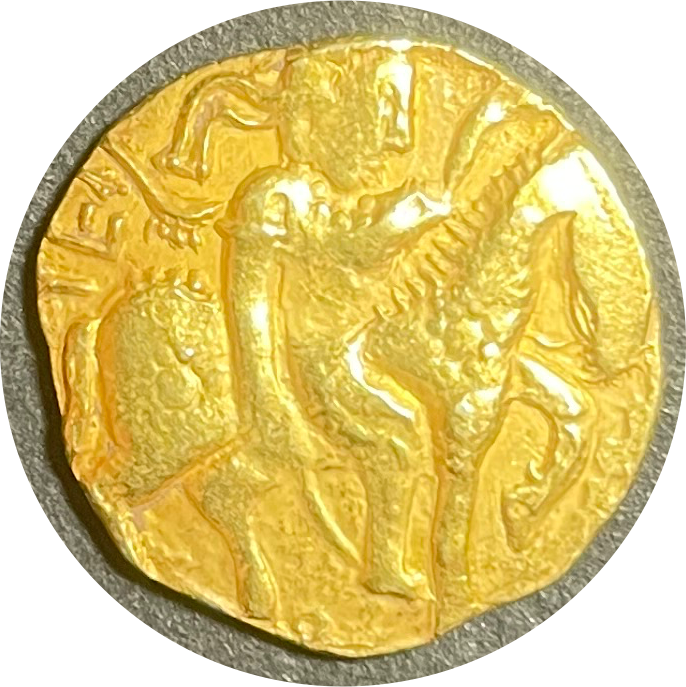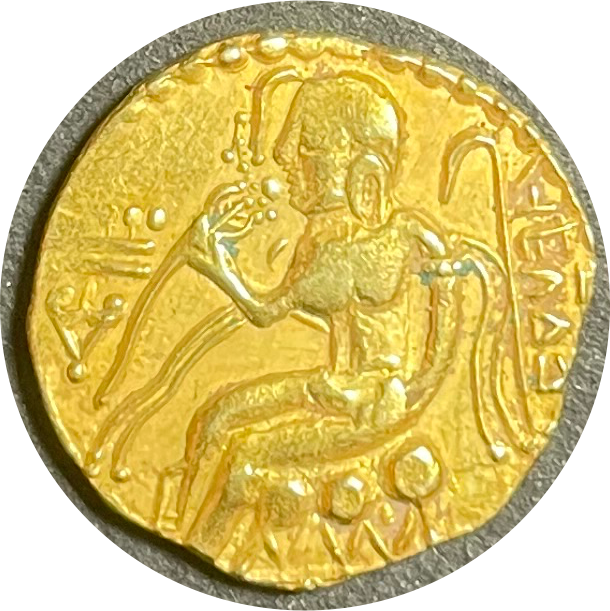

Coin Details
Country:
India
Dynasty:
Gupta Empire
Ruler:
Chandragupta II(375 - 415)
Composition:
Gold
External Links
Description
Obverse king riding a caparisoned horse to right holding a bow diagonally;Reverse nimbate goddess, seated in profile on a tall wicker-stool, holding a long-stemmed lotus in one hand and a noose in t
Other Details
Themes:
Horseman Type
Era:
0 - 700 AD
Shape:
Round
Edge:
Plain
Rim:
Plain
Diameter:
19.56
Weight:
7.79
Face Value:
1
Issued On:
375

Exquisite
Gupta Empire Gold dinar of Chandra Gupta II c.375-415 AD Horseman type Altekar Class II Var. B . Obverse : king riding a caparisoned horse to right holding a bow diagonally. Reverse : nimbate goddess, seated in profile on a tall wicker-stool, holding a long-stemmed lotus in one hand and a noose in the other. Tamgha in left field, a long staff to right, Brahmi legend Ajitavikrama Rare G 199
Comments
The Dinar gold coins of the Gupta period are among the rarest examples of numismatic excellence. In the Gupta dynasty coins, the governing king was typically shown on the coins\' front, which also contained legends, while a deity was usually demonstrated on the reverse. The modern dinar\'s historical antecedents are the gold dinar and the silver dirham, the main coin of the medieval Islamic empires, first issued in AH 77 (696–697 CE) by Caliph Abd al-Malik ibn Marwan. The word \"dinar\" derives from the Latin word \"dēnārius,\" a silver coin of ancient Rome, which was first minted about c. 211 BCE.The Kushan Empire introduced a gold coin known as the dīnāra in India in the 1st century AD; the Gupta Empire and its successors up to the 6th century adopted the coin.The 8th century English king Offa of Mercia minted copies of Abbasid dinars struck in 774 by Caliph Al-Mansur with \"Offa Rex\" centred on the reverse. The moneyer likely had no understanding of Arabic as the Arabic text contains